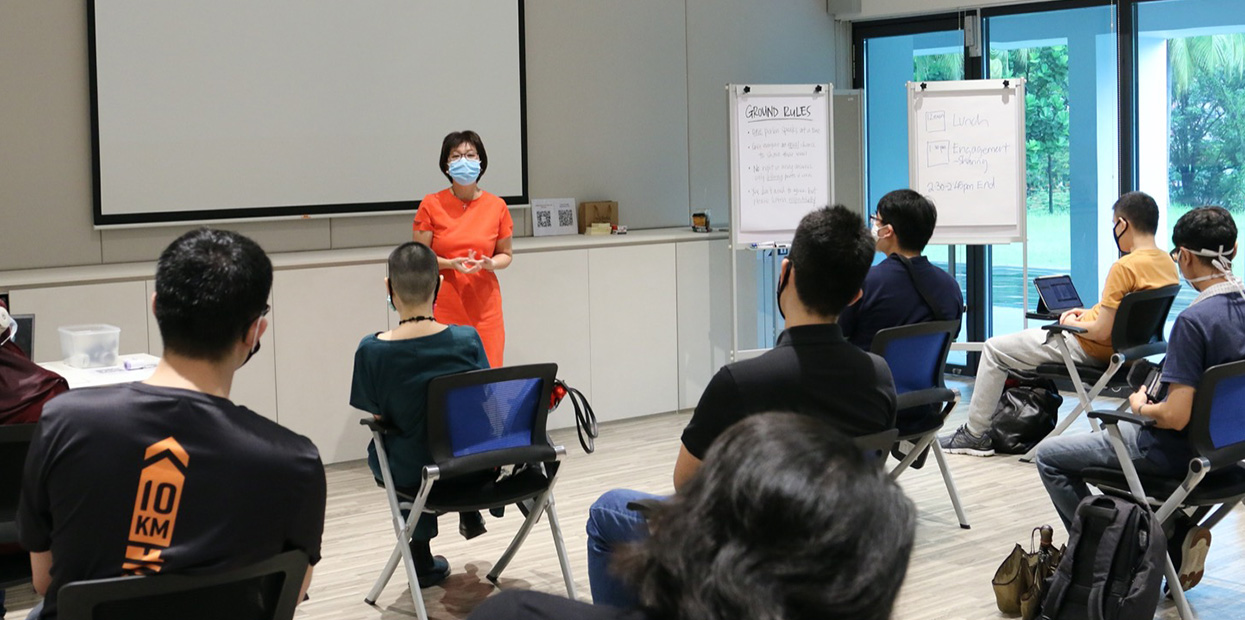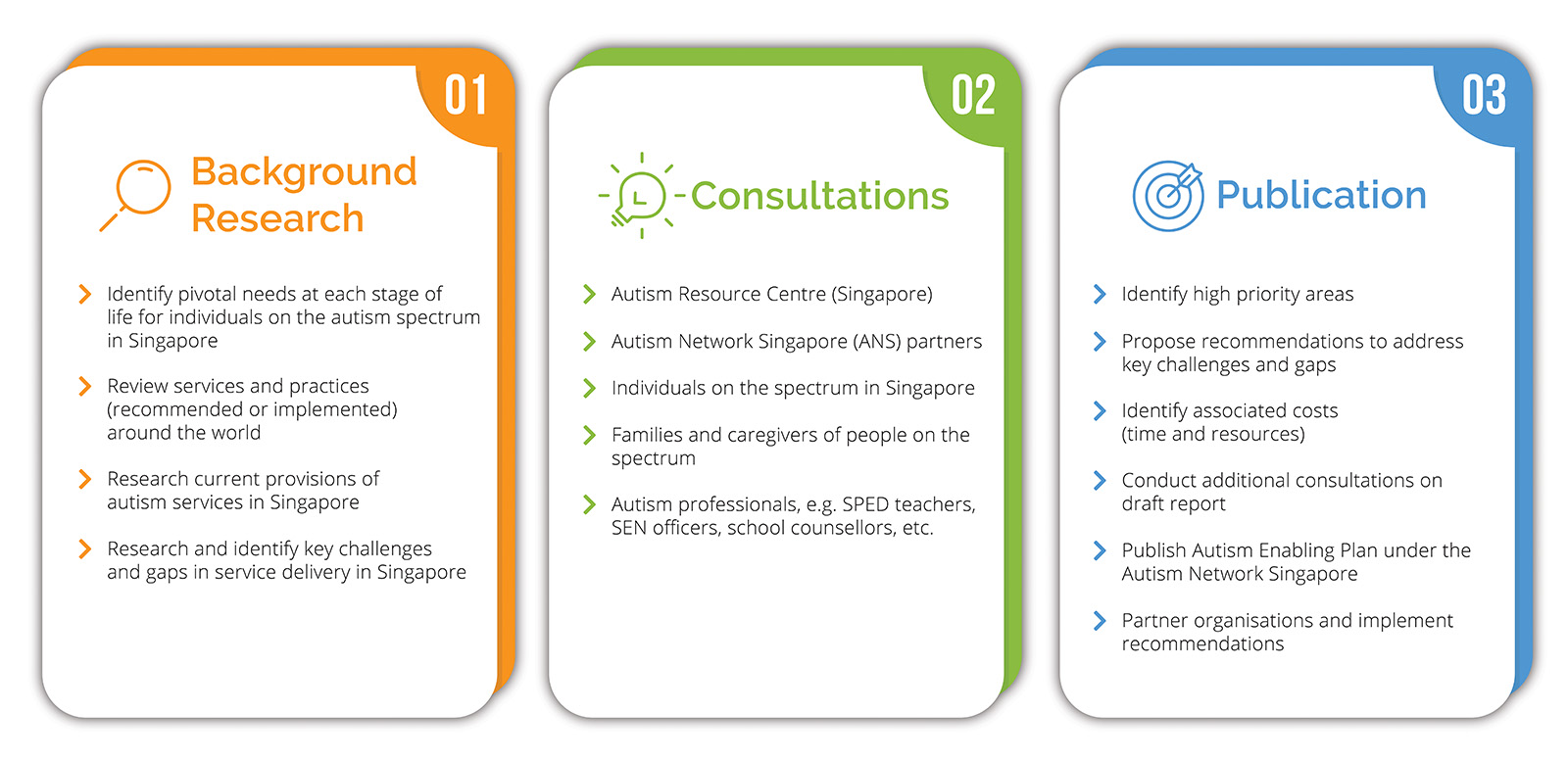The Masterplan Proposal
With greater awareness and detection of autism over the past few decades, there has been a growing number of individuals diagnosed with autism globally. In the United States, the Centers for Disease Control and Prevention (CDC) published a study in March 2020 showing an increase in the estimated prevalence of autism spectrum disorder (ASD) from one in 59 children in 2018 to one in 54 children in 2020.[1]
In 2018, Autism Spectrum Australia (Aspect) also revised its estimate of autism prevalence in Australia from 1 in 100 to 1 in 70, representing a 40% increase in the number of people diagnosed with autism in Australia.[2]
Although no formal study on the prevalence of autism has been conducted in Singapore, estimates based on data from public hospitals suggest that numbers are also increasing here. In 2014, about 4,400 children were diagnosed with developmental issues, which is a significant jump from 2,500 children in 2010.
As of 2016, it is estimated that one in 150 children in Singapore is on the autism spectrum. [3]
With the growing number of persons with disabilities in Singapore, the government has continued to support the development and publication of the Enabling Masterplans for the Disabled. These are 5-year national roadmaps to guide Singapore’s efforts in the disability sector.
The 3rd Enabling Masterplan 2017 – 2021: Caring Nation, Inclusive Society was unveiled in 2016. This national Masterplan seeks to build a more inclusive society where persons with disabilities are empowered and enabled to realise their potential and participate fully as integral and contributing members of Singapore society. To this end, 20 recommendations were detailed to guide the initiatives for the disability sector from 2017 to 2021. The next Enabling Masterplan for the Disabled will be developed in 2021.
While the Enabling Masterplans for the Disabled provide guidance for the general disability sector, the needs of different disability groups are not homogenous.

As such, it is important that individual disability groups conduct studies and develop their own Enabling Masterplans so that the needs and gaps within their specific groups can be more accurately identified and addressed.
Hence, the Autism Resource Centre (Singapore) (ARC(S)), with support from the Autism Network Singapore (ANS), embarked on a project to develop an Autism Enabling Masterplan. The Masterplan aims to identify needs and gaps that are specific to the autism community in Singapore and propose recommended strategies to address the gaps. The goal is to provide a directional roadmap for key autism service organisations in Singapore in their work of empowering and enabling persons on the autism spectrum to realise their full potential and live a good quality life.
The Masterplan will be a living document that will be regularly updated to reflect the progress made on the range of support services available to persons on the spectrum in Singapore.
The Guiding Principles
The following are three key principles guide the discussions and recommendations of the Autism Enabling Masterplan:
Persons on the autism spectrum must have the opportunity to lead lives that offer them a meaningful quality of life (QoL). QoL is optimised when a core set of indicators are met.
There are several different frameworks that delineate the key QoL indicators (e.g., World Health Organization Quality of Life Framework, WHOQOL; European Union 8+1 dimensions of Quality of Life, etc.) For the purposes of this Masterplan, the working committee elected to rely on a simplified QoL framework produced by ARC(S) and Autism Association (Singapore) (AA(S)) as it was designed to be sufficiently clear for the majority of persons on the spectrum to understand. This simplified framework was based on a study of different QoL frameworks around the world.
Under this framework, there are 10 indicators of a good quality life:

As Dr. Stephen Shore, an autistic self-advocate and a renowned professor, once said, “If you’ve met one person with autism, you’ve met one person with autism.” There is great diversity among persons on the autism spectrum – each individual has a unique profile of preferences, strengths, and level of support needs and contributions. Ensuring that our recommendations provide coverage across the continuum of needs increases the outreach and impact to every person on the spectrum living in Singapore. This has been achieved by conscientiously including the voices of persons on the spectrum, and/or their proxies such as their caregivers and significant others.
As the saying goes, “it takes a village to raise a child” – we recognise that to address the needs and gaps within the sector, it is necessary to identify and partner with like-minded and results-oriented parties to achieve the desired outcomes for the autism community in Singapore. Furthermore, while some issues are addressed through the government or through the work of Social Service Agencies (SSAs), others may be better addressed at the individual, family or community level.
The Development Process
The development process for the Autism Enabling Masterplan involved the following stages:
- Background Research
- Consultation
- Publication
During the consultation phase, a series of consultation meetings, polls, and focus group discussions were organised to gather inputs from persons on the autism spectrum, their families and caregivers, as well as the organisations that serve and support persons on the spectrum.

Inputs were gathered from more than 500 participants, providing useful insights for the working committee and were integral to the development of recommendations in this Masterplan.

- Matthew J. Maenner, et al., “Prevalence of Autism Spectrum Disorder Among Children Aged 8 Years — Autism andintroductionDevelopmental Disabilities Monitoring Network, 11 Sites, United States, 2016”, Surveillance Summaries 69, no.4 (2020).
- Autism Spectrum Australia website (accessed 1 March 2020).
- 3rd Enabling Masterplan Steering Committee, 3rd Enabling Masterplan 2017 – 2021: Caring Nation, Inclusive Society (2016), p. 15.